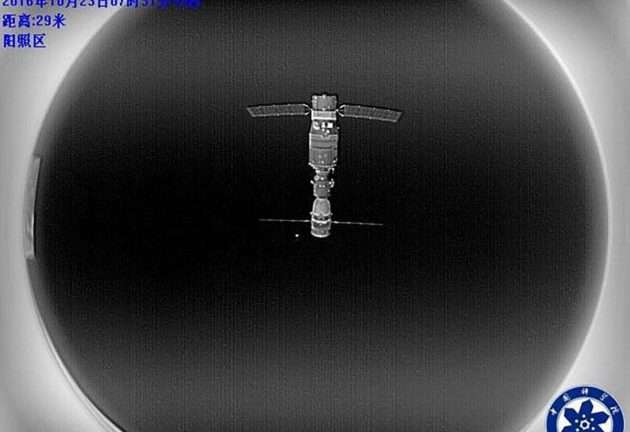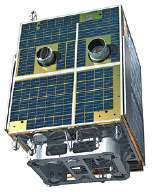New 'selfie' microsatellite captures images of Chinese space station

Here's a great new view of China's Tiangong II space station, taken by a new 'selfie' satellite. The Banxing-2 satellite is about the size of a desktop printer and was released from the station on Sunday. It has been nicknamed the "Selfie Stick" by Chinese officials and is taking pictures of the station and the docked Shenzhou XI spacecraft. The Chinese astronauts who boarded the station last week aren't just joining the selfie craze; the 25 megapixel camera with wide-angle and infrared imagers has a specific job.
"The companion satellite monitors the conditions of Tiangong II and Shenzhou XI all the time, which is helpful in detecting failures," said Chen Hongyu, chief engineer of the satellite program and a researcher with the Chinese Academy of Sciences' Micro-satellite Innovation Institute.
The microsatellite as three solar panels, so can generate enough power to adjust its orbit to shoot pictures of the lab and spacecraft. Its predecessor, Banxing-1, accomplished the same mission for Shenzhou VII in 2008. The Chinese Academy of Sciences says the new model is smaller and has a higher capacity.
Now well into their 30-day mission, astronauts Jing Haipeng and Chen Dong boarded China's second version of its "Heavenly Palace" last week. They launched Monday, October 17 from the Jiuquan Satellite Launch Center in the Gobi Desert on a Long March 2F rocket and Shenzhou-11 completed a fully automated approach and docking to Tiangong-2 on Tuesday.
During their mission, the two crew members will perform experiments from 14 different areas including biology, space life science and technological demonstrations. They have set up plant cultivation and growing experiments and have six silkworms on board for a student-based study to see how silkworms produce silk in microgravity. The crew is also doing medical testing on themselves using Tiangong II's on board ultrasound equipment to scan their cardiovascular and pulmonary systems. They'll also be checking for bone and muscle degradation and track any changes to their eyesight. NASA and ESA has discovered that the majority of astronauts doing long-duration space flights on the International Space Station have suffered various kinds of vision problems while in space, or upon their return.

This 30-day medium duration mission is China's longest space mission to date, and the main task of the Tiangong crew is to help prepare for longer future missions on a larger, modular space station that, according to reports, China hopes to launch by 2018.
Source: Universe Today





















